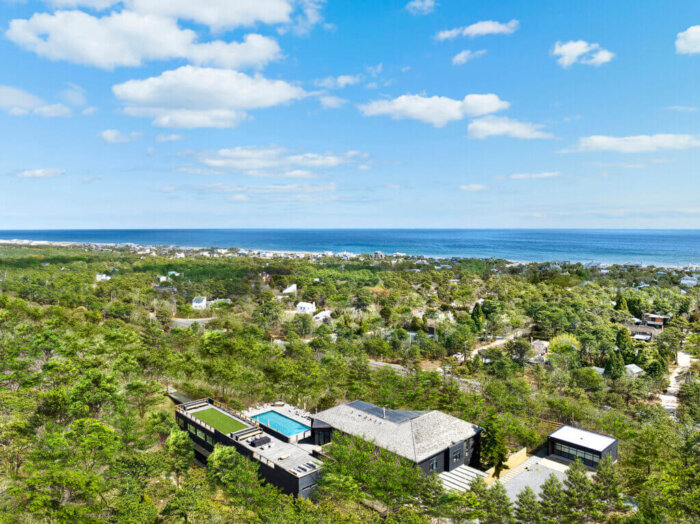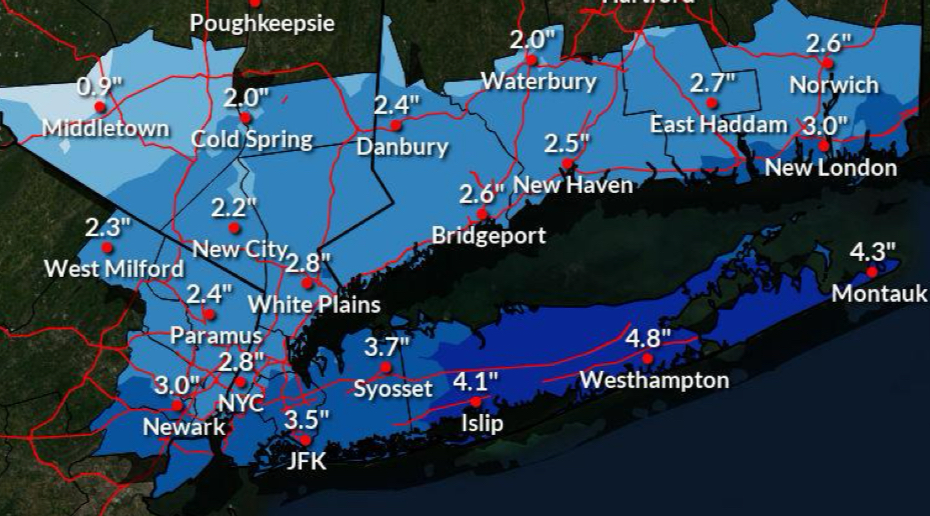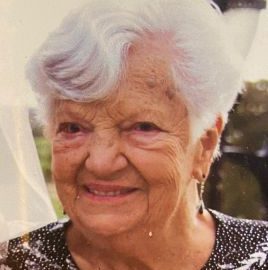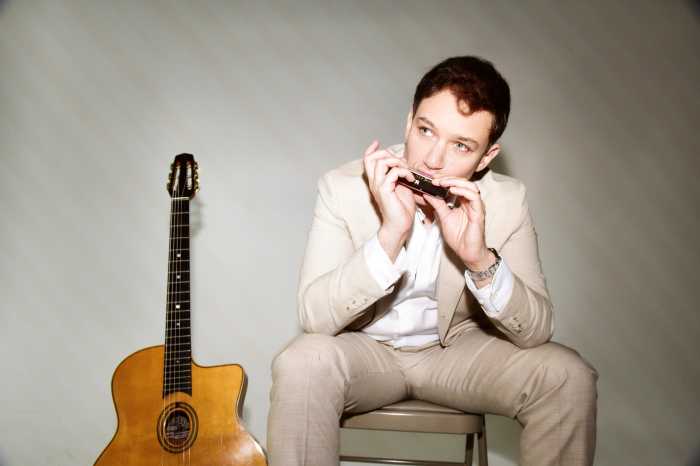Real Estate Biz Using Drones High above the Hamptons
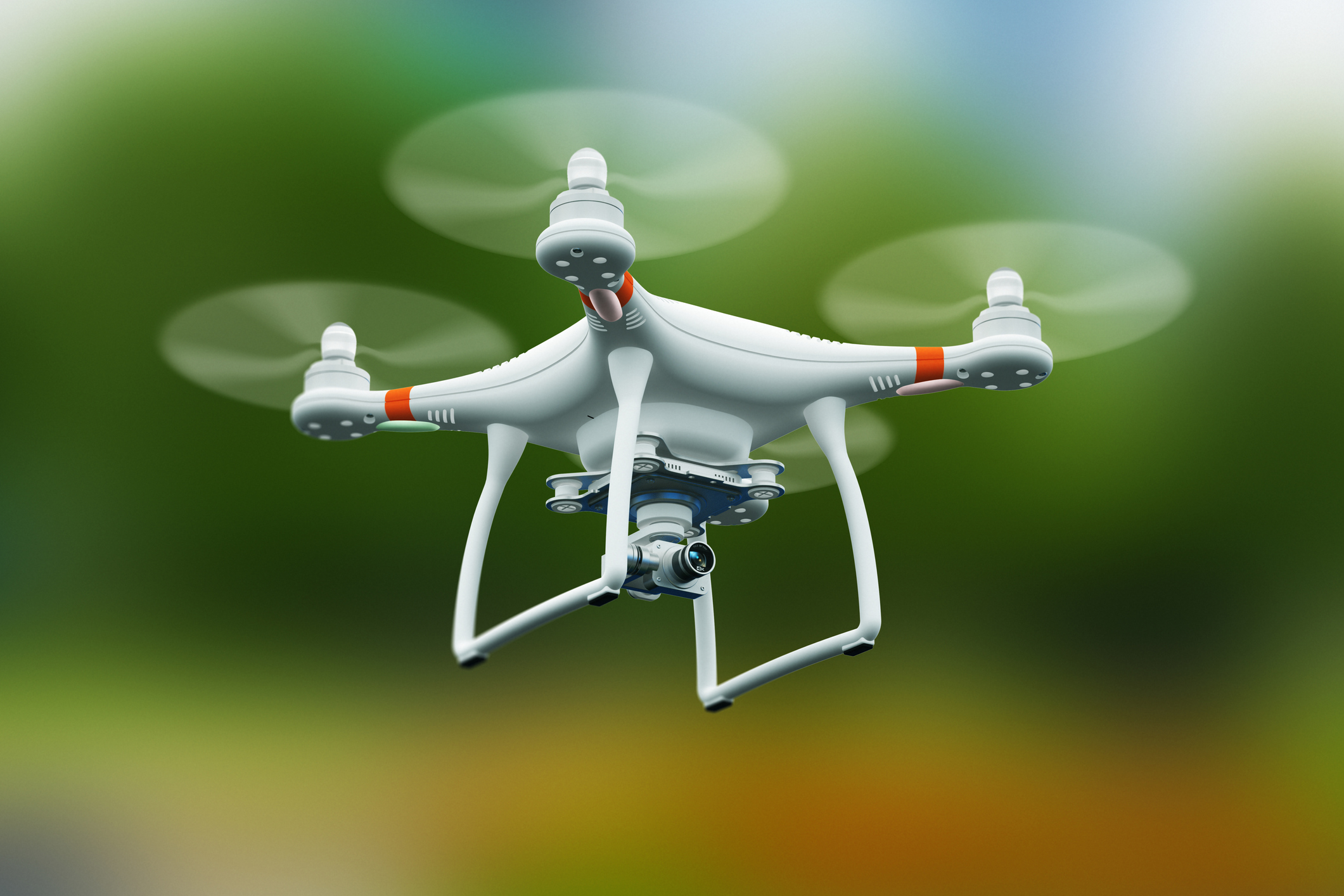
Gavin Zeigler is an experienced pilot who does most of his flying in the Hamptons, but his flights likely aren’t similar to any you have taken. He specializes in operating small aircraft, typically on flights that last minutes with vehicles that can fly hundreds, not thousands, of feet up in the air. As part of training, he had to show he could land on a runway, but generally stays away from airports. When it’s time to return, he can simply hit a button to head home.
Zeigler’s day job is as a traditional photographer for Sotheby’s International Realty’s Southampton, East Hampton and Bridgehampton offices. But he also is a preferred vendor for Sotheby’s International Realty, specializing in real estate photography with drones. Armed with a Part 107 pilot’s license, he is the owner of Hamptons Vacation Photography, typically shooting from Speonk to Montauk.
His images, used in listings and on social media, have helped sell numerous East End properties, including some of the most high-end to hit the market. His pictures, for instance, were used to market “La Dune,” an oceanfront estate at 366 and 376 Gin Lane in Southampton, that recently sold for a little more than $89 million.
Sotheby’s Concierge Auctions sold the property in partnership with Harald Grant of Sotheby’s International Realty, Tim Davis of The Corcoran Group and Cody Vichinsky, president and founding partner of Bespoke Real Estate.
“It’s a beautiful property right on the ocean,” Zeigler says. “It was a gorgeous day much like today with a few wispy clouds.”
Vicky Reynolds, a real estate advisor with Daniel Gale Sotheby’s International Realty’s Hamptons office, says she uses drones because they give a different perspective and elevate the user experience.
“When I am representing waterfronts, I can now show the vast water and with the sunrise or sunsets which entices the buyer,” Reynolds says. “If a house is ocean to bay, the drone can show both waterfronts in one picture.”
High-flying Hamptons
He has shot high-profile properties as well as many that fly below the radar of news coverage. In general, weather permitting, Zeigler says the Hamptons are perfect for drone photography. “It’s ideal, because it’s an idyllic place,” he says. “It’s a beautiful place.”
Drones have become a way of capturing the beauty of large East End properties, where the view from the air often is part of the marketing. The Hamptons’ flat topography and waterfront properties are ideal for drones.
“It’s a remarkable machine,” Zeigler says of drones that cost $3,000 to $4,000. “It’s a different view of the world. You get a bird’s eye view.”
There are limits for drones, which without special permission from the Federal Aviation Administration must remain five miles from airports.
Airports in places such as Montauk Westhampton and even Sagaponack can eat into a lot of flying territory. Zeigler, however, says he often can get special permission.
“I can fil out a form, certify I’m flying within the guidelines of my license, am aware of the proximity to aircraft, and I can get an OK to do it,” he says of flying closer to airports. “I can’t photograph a house that borders the East Hampton airport. I can’t fly there.”
He also needs special permission to fly at night, more than 30 minutes after sunset, although he rarely requests that. You want to see your drone at all times, he says, to operate safely and securely.
“Even in daytime, I have to be able to see that drone. At night, there are lights,” he says. “But at night, it’s more difficult to see it and it’s harder to see obstacles.”
Discovering drones
Zeigler came to drone photography after doing standard photography for years. He started by taking pictures in 1974 with a 35mm Yashica TL Electro X camera that his father gave him. He currently uses a Canon 5d Mark III, Canon 5d Mark IV and Canon EOS R5 bodies along with L and R lenses for conventional photography. And he holds a FAA remote pilot’s license, flying DJI Mavic 3 and a DJI Mavic 2 Pro drones.
“They’re basically small robots. They have avoidance. They can fly around things,” Zeigler says. “You can determine where you want to fly and it will follow a selected course. You push a button and it will fly back to you wherever it is and avoid obstacles.”
His drones typically can fly as fast as 45 miles an hour, although he often flies much slower, typically taking a dozen photographs of properties. “Tell the story,” Zeigler says. “Let a potential buyer understand how the place is laid out, how the buyer is situated on the property.”
Not all properties are suitable for drone photography. Waterfront properties tend to be ideal, while houses surrounded by trees, such as in the Northwest Woods, may not lend themselves readily to airborne photography.
“There’s no sense in flying a drone if all you see are tree tops,” Zeigler says. “Not every house is conducive to drone photography.”
Prepping the picture
His drones are rated five or six miles, but he typically keeps them much closer. Zeigler typically picks a spot under a tree or another location invisible from above, although he can remove himself and others via Photoshop. He sets up the property for its photograph, if not its closeup, deploying pool umbrellas.
“You don’t want everything closed up. You want it to look as nice as possible, without any vehicles,” he says. “Those can be removed in Photoshop, but I prefer to shoot without vehicles.”
And, of course, you want good weather. Zeigler says drones don’t do well in the rain, but aesthetics matter as well. “It’s not advantageous to fly on a dark, cloudy day,” Zeigler adds. “The pictures look dull. You want a nice, sunny day.”
Zeigler also decides when he thinks he’ll get the best picture. “The time of day is important,” he says. “You can use apps to figure out where the sun is at a particular hour to figure out the best angle.”
He wants the sun behind the drone to get the best possible shot without sun spots and other effects. “Typically, you don’t want to shoot into the sun. It can wash out a picture and cause sun flares,” he says.
Drone photography gives clear, full, bird’s eye views of large properties. He has shot houses fairly low, just above a cliff, as well as high above, sometimes showing aspects not easily visible from the ground.
“Some of the best shots aren’t just flying above a house. It’s how to creatively capture that house, to present it in its best light,” Zeigler says. “Some great shots are only twenty feet off the ground. You don’t have to go to the limit and shoot down.”
The view from above
Different features can be best captured from different angles in the air in photo shoots from above. Some shots seek to capture a whole property, coast line or portions of residences.
“There are houses that have architectural details that you can’t get a good look at. They’re more prevalent looking down ,” he says. “You get a layout of the patio and the pool.”
Drone photography can show water, giving prospective buyers a view of the beach as well as buildings. “In the Hamptons, you want to know how close the water is,” Zeigler says. “How close are you to the beach, to a town? You can get a much better sense of the property. To see its proximity to the water can be helpful in selling a house.”
While drones are high tech, so are the remotes. Zeigler’s controls include screens, so he can hit a button and take a picture, while seeing data such as altitude, speed and photography format such as JPEG or raw footage.
Cell phones may shoot JPEGs, but Zeigler typically shoots what’s known as “raw” footage at 20 to 40 megapixels. “It’s not a grainy image. It’s really good quality,” he says. “With raw, you collect the information and you can put it together. I want the choice. I want to be able to make the decision on what that blue looks like.”
Devices make decisions with JPEGs like adjusting for light, while Zeigler says it’s easier to adjust raw footage later. “In raw, you get a photograph and take all the information,” he says. “I can do more with that raw image as far as light, shadow, color.”
He edits photographs, adjusting light, blue sky hues and touches up any dry spots on lawns. Zeigler shoots stills, although he says drone video also can provide tours and good images.
“If you’ve got an estate, you can fly down a driveway, in through the front door, out the back door to a pool,” he says. “You can get creative with video.”
Drones can literally fly through a home, giving video tours. “Drones are being used inside to give seamless tour of the home,” Reynolds says.
A Shelter Island resident, painter and sculptor, Zeigler says you have to bring a good eye to the work as well. He also has shot parties, including a drone looking down on about 75 people in a pool at an engagement party. And he shot wit ha drone for an insurer, following a flood.
“When the Eiffel Tower was built, that opened up a whole different viewpoint from an artistic standpoint,” he says of seeing and shooting from the sky. “When artists were able to climb up and look down, much like you look down with a drone, it changed a lot of things. You’re seeing something from a perspective that wasn’t there or hadn’t been seen before.”
Security
Drones also are being used for residential and commercial security, as video becomes a bigger element. “If you think about a large property, the number of cameras you have to put and the aesthetics are not great,” says Curtis Cole, owner of Westhampton Beach-based Systems Design Co., a tech company specializing in residences. “It’s a lot of cameras and a lot to take care of.”
When motion detectors or radar detect movement, a drone can automatically deploy, lifting up from a tiny heliport, to that location. “People with very large properties and high security concerns are getting them,” Cole says. “These are people who have manned security on their property. This can reduce that manned security.”
Cameras already are deployed at construction sites for security, safety and to satisfy insurers. Cole says drones could also be deployed at these sites, although trailers equipped with cameras currently are common. “We have a few projects that may get drones,” he says.
Myriad applications
Drones also are used in movies, commercials and print ads as well as agriculture, emergency services and to find lost children and pets. Police can outfit them with thermal sensing devices to search at night.
A drone even has been developed that can land in the water and double as a float to rescue someone drowning. And they’re even being developed as air vehicles to carry people to destinations. “It’s an amazing piece of equipment,” Zeigler says. “There are a lot of applications.”
Drone difficulties
Zeigler has had neighbors approach him, asking why he’s flying a drone near their house, only to tell them that he’s photographing their neighbor’s house for listing. “Generally, that has worked,” he says. “I haven’t had any problems.”
While drones have avoidance technology, birds sometimes attack them, forcing drone pilots to evade attack. “You’ve got to watch out for birds. Sometimes, they’re really interested in the drone. I had a seagull try to attack it once,” Zeigler says. “I had to come down to three or four feet off the water. If I had stayed at altitude, he would have probably charged it.”
On another occasion, an osprey took down his drone after he shot a house. “I was on my way back to land. There was an osprey nearby. They attacked it and it crashed,” Zeigler says. “That was a $6,000 drone down the tubes.”
A skilled drone pilot can operate the vehicle inside and outside and maneuver it up, down, left, right and do a 360-degree spin. “I can fly it over the ocean and get six feet off the water and less and shoot from low vantage points over a large body of water,” he says.
Sunsets are beautiful, but when you’re shooting real estate, you want the focus on the house. Still, now and then, Zeigler shoots property at that time of day, if he thinks that’s appropriate.
“Sometimes, I shoot sunsets for real estate,” Zeigler says. “If the house is appropriate for that scenario. It’s really case by case.”
